Saiku History Museum 斎宮歴史博物館
|
|
|

Saiku History Museum (officially and incorrectly named "Saiku Historical Museum") is a 15-min. walk through the park from Saiku Station on the Kintetsu Yamada Line.
|
|
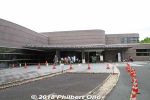
Opened in Oct. 1989, the Saiku History Museum (officially and incorrectly named "Saiku Historical Museum") is located on the former site of the Saiku Palace. Open 9:30 am to 5 pm. Closed Mon. and Dec. 29–Jan. 3.
Admission ¥340 (Free for kids)
|
|

Museum floor plan. There are two Exhibition Rooms, lecture hall, theater, library, and coffee shop.
|
|

Museum entrance hall.
|
|
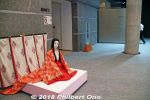
Museum greeter (non-human).
|
|
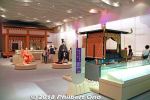
Exhibition Room 1 shows Saiku Palace- and Saio princess-related artifacts. Costumes, reconstructed Saio living quarters, and a few mannequins. 常設展示室I
|
|
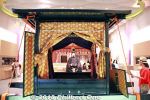
Saio princess palanquin called "Sokaren." 斎王の神輿「葱華輦」
|
|
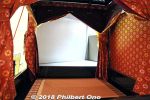
Saio princess palanquin called "Sokaren." 斎王の神輿「葱華輦」
|
|

About the Saio princess' Sokaren palanquin. The roof has a decoration that looks like an onion flower.
|
|

Saio princess procession.
|
|
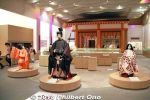
Aristocratic boy wearing a Heian-Period suikan costume. 童男人形「水干」, Government official wearing a sokutai costume. 武官人形「束帯」, and aristocratic girl wearing akome costume. 童女人形「衵」
|
|
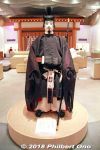
Government official wearing a Heian-Period sokutai costume. 武官人形「束帯」
|
|
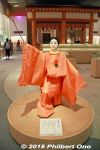
Aristocratic boy wearing a Heian-Period suikan costume. 童男人形「水干」
|
|

About the aristocratic boy's Heian-Period suikan costume. 童男人形「水干」
|
|
|
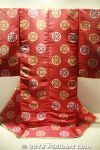
Saio princess kimono.
|
|
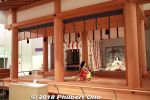
Living quarters of the Saio princess in the 11th century. 斎王居室復元模型
|
|
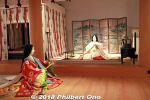
Living quarters of the Saio princess. Woman in front is the Myobu, the Saio’s first lady-in-waiting. 斎王の居室
|
|
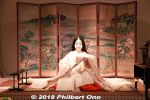
Saio princess in her living quarters (dining room). She wears a white juni-hitoe kimono, formal clothing used in ceremonies. 斎王の居室
|
|
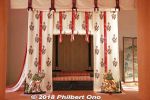
Sleeping quarters for Saio princess.
|
|
|
|
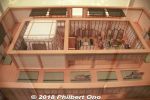
Top view of living quarters of the Saio princess. 斎王御殿 復元模型 1/15
|
|
|
|
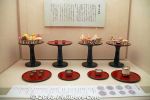
Saio’s meals.
|
|
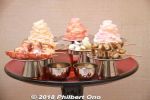
Saio’s meals
|
|
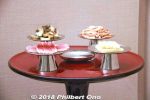
Saio’s meals
|
|
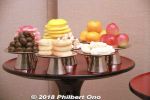
Saio’s meals
|
|

Selection and isolation of the Saio princess.
|
|

The Saio princess officiated important ceremonies at Ise Grand Shrines only three times a year.
|
|

Faith and purity in Saiku. The Saio princess was not allowed to fall in love. How cruel...
|
|

About the Saio procession.
|
|

Route of the Saio Gunko procession.
|
|
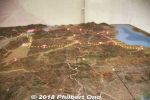
The Saio princess and her entourage of several hundred traveled from Kyoto (left in photo) to Ise in five nights and six days, about 130 km. Along the way, they lodged at Seta (Otsu), Koka, Tarumi (Tsuchiyama), Suzuka, and Ichishi before arriving in Saiku.
|
|
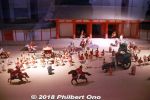
Model of Saio Gunko procession. In its heyday, there were as many as 500 people in her procession.
|
|

History of the Saio.
|
|
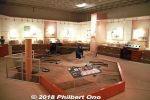
Exhibition Room 2 centers on Saiku archaeological excavations and artifacts. Here's a reconstruction of a Saiku dig. 常設展示室II
|
|
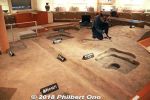
In 1970 when they surveyed the land for a housing project in Meiwa, they finally discovered the remains of the Saiku Palace. In 1979, the site was designated as a National Historic Site. Reconstruction of a Saiku archaeological excavation.
|
|
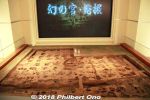
Scale model of a Saiku archaeological excavation. 発掘調査区模型(20分の1)
|
|
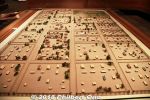
Scale model of of the Saikuryo Government area where the Saio resided in Saiku. A large spread of administrative buildings, storehouses, and shrines. 斎宮寮 復元模型 1/400 Today, archaeological digs continue at this site. An area 2 km by 700 meters has been designated as a National Historic Site.
|
|

Saiku buildings.
|
|

The fall and abolishment of the Saiku.
|
|
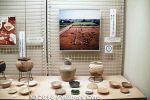
Pottery found at the Saiku site.
|
|
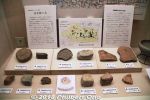
Saiku roof tile fragments.
|
|
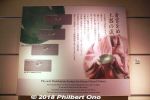
Green-glazed pottery
|
|
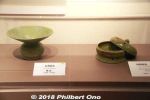
Green-glazed pottery used in Saiku.
|
|
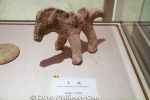
Doba (clay horse figurine)
|
|
|
|
|

Saiku is also known for ancient burial mounds (kofun) or tsukayama. This one is near the history museum. 塚山2号墳
|
|
|
|
|
|